Maverick Life
A plate set worthy of a ‘royal’ visit
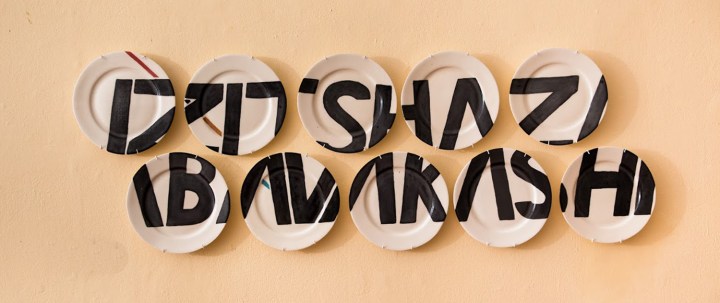
The plate may be an item that serves a practical function, but it has played – and continues to play – another socially significant role, that of the status symbol.
“Makhi, tell me, does your man love you?” says the woman in orange addressing her visitor, a neighbour, as she pours her a cup of tea. Makhi is short for makhelwane, the Zulu word for neighbour.
“What do you mean by ‘does he love me?’” asks the neighbour, “Of course he loves me.”
“I’m asking if Sipho really loves you?” she repeats.
“Woo shame! We really love each other,” the neighbour responds, taking a sip of her tea.
“What does he do for you? When someone loves you they should do things for you and buy you special things. Like my plates,” she says, pointing towards her wall unit where her plates are displayed. “You’ll never find them at the places where you shop… like the plaza and the Chinese shops; you’ll never find them there.”
“You lie!” exclaims the neighbour.
“These, Makhi! These plates, they are LIMITED EDITION! And you know what Makhi, you’ll never eat from these. You’ll only ever get to look at them on the wall unit. I will never dish up for you on those plates; not for you!” she states, proudly.
Cut to the next scene, a close-up shot of the plates, accompanied by a voiceover:
“Get your very own ‘visitor’s plate’ set, and show your neighbours that you are a high roller… BUY YOUR SET TODAY. Call 0800-KHOTHA.”
The scene above is from a one-minute long tongue-in-cheek animated infomercial by artist Dada Khanyisa. It was created to accompany an artwork that was part of their 2017 graduation exhibition, ‘Inkosi ibenathi’ [May the lord be with us], at UCT’s Michaelis School of Fine Art.
People become an extension of their spaces, just as much as a place is a reflection of those who occupy it.
The actual artwork was made up of 10 plates, arranged horizontally in two rows of five plates each, with the Zulu phrase “Izitsha zabavakashi” written across the plates. That phrase, which is also the title of the artwork, translates to ‘plates for guests’ in English.
“People become an extension of their spaces, just as much as a place is a reflection of those who occupy it. Being exposed to different people in the many spaces I have lived and experienced is what fuels this body of work. From the people who walk through city centres submitting their CVs, to the gogos selling amagwinya at the taxi rank. The train fruit sellers, public sector workers, Kasi advert wall painters and the ‘things need to change’ protesters. The ones who handshake with a thumb-pop in agreement, also the auntie who works a night shift just so food can be on the table… This comes from a sincere place of appreciation and love for the people around me. This body of work is dedicated to those people,” wrote Khanyisa at the time of the exhibition, referring to the full body of work, which included sculpture and paintings reflecting familiar scenes of South African life, particularly that of black South Africans.
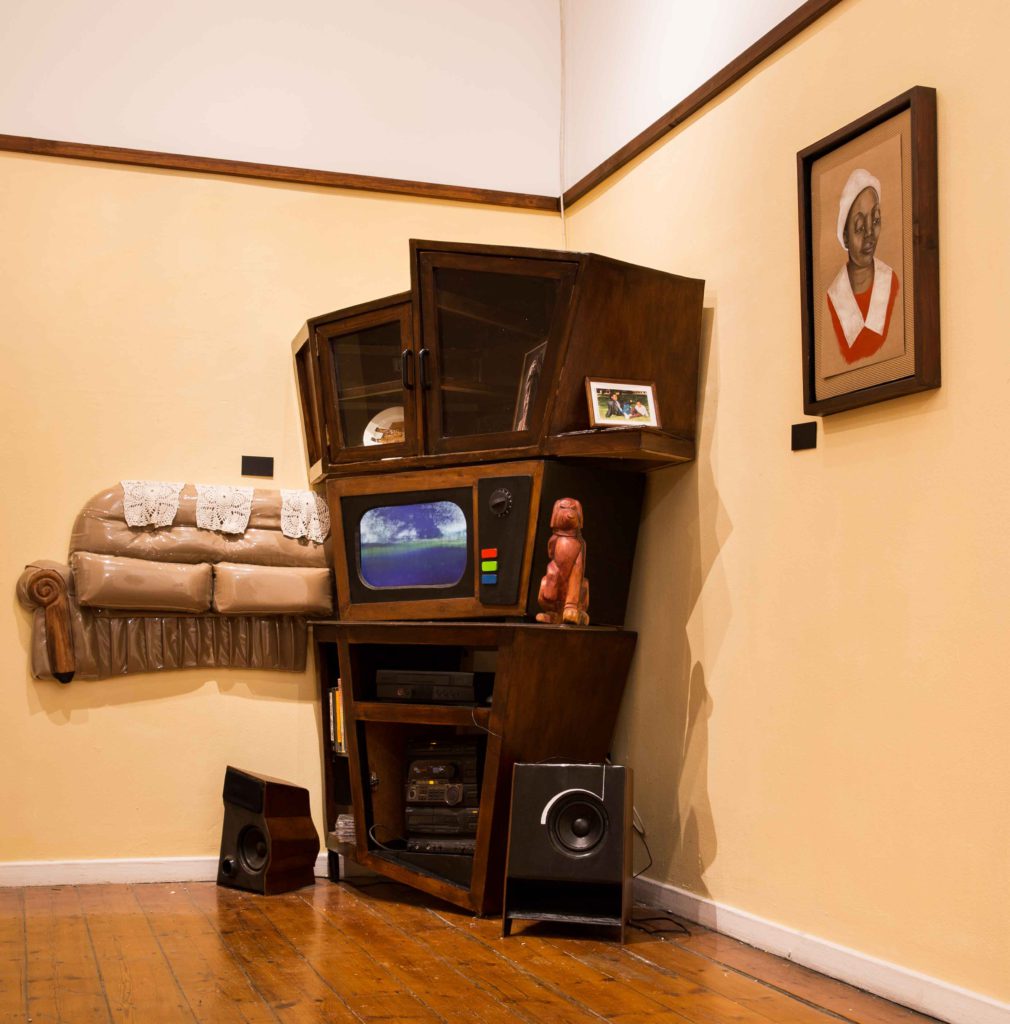
“Father Figure”, 2017. Installation by Dada Khanyisa. Image by Dada Khanyisa
In Khanyisa’s work these moments are often viewed and presented with a touch of humour, and in a way that is relatable for South Africans who can recognise their own lives, experiences and homes reflected in the work. Such as the “visitor’s plates”, fancy tableware and crockery often kept and displayed on a shelf on the wall units that were particularly popular in the ‘80s and ‘90s, especially in relatively middle-class township homes. This tableware was often kept for special occasions and special guests, sometimes used only a couple of times a year should the occasion, or that elusive guest who is worthy of the home’s finest tableware, finally arrive.
- A plate featuring artwork by artist Kudzanai Chiurai.
- A plate featuring artwork by artist Hank Willis Thomas.
- A plate featuring artwork by artist Mikhael Subotzky.
- A plate featuring artwork by artist Brett Murray.
- A plate featuring artwork by artist William Kentridge.
- A plate featuring artwork by artist Alfredo Jaar.
The use of plates as signifiers of social standing is not particularly unique to the ‘80s, ‘90s or even present day South Africa. In fact, the series of events that would eventually lead to “porcelain plates as status symbols”, and to the ubiquity of guest dinnerware in South African homes, go even further back, to 7th century China, during the Tang dynasty (618–907 AD).
It was during this period after centuries of experimentation with clay that the whiteness and translucency of porcelain was finally achieved, using Kaolin, a white clay that could be fired up at high temperatures. And although production and artistry improved greatly during the centuries that followed, it wouldn’t be until the era of the Yaun dynasty (1279 – 1368) that the porcelain would truly come to resemble the quality we know today, and by the Ming dynasty (1368 – 1644) the plates were being exported to Europe.
Up until the 18th century, the Europeans couldn’t replicate the Chinese technique of creating plates out of hard-paste porcelain; so for centuries, these could only be imported from China, making them a rarity. Incidentally, this is also the reason that porcelain tableware came to be known as china or fine china.
Prior to porcelain, in much of Europe, precious metals such as silver and gold were preferred by the wealthy, pewter for the middling classes, and wood for the poor.
“Early in the Middle Ages, European royalty and church hierarchy found gold and silver tableware useful as a status-laden portable wealth… During good times, items crafted of precious metals impressed visitors and enhanced the honour and prestige of the householder,” writes American author Mary Ellen Snodgrass in her book, Encyclopaedia of Kitchen History.
“During the Renaissance, prestige and wealth received attention from banqueters, who observed the fineness of blown glass, faience, and silver and gold serving dishes and pieces both in use and displayed on elegant credenzas. One humanist, Giovanni Pontano, wrote of the luxury at the court of Naples in De Splendore (On Splendor, 1498). He affirmed the value of eating from expensive and ornate plates and flatware as appropriate to those of high station.”
According to the United Kingdom’s Royal Collection Trust, “Henry VIII (1491–1547) is the first English sovereign known to have owned porcelain.” After his death, the appetite for porcelain grew in wealthy English circles, and by the 17th century decorative porcelain collections were in vogue.
Plates, it would seem, are one of the earliest and surprisingly most lasting ways to say, “bling bling money ain’t a thang’.
“One of the most devoted early collectors of porcelain was Mary II (1662–94). She amassed a wealth of Chinese blue-and-white and blanc de Chine (white) porcelain for her apartments at Kensington Palace and Hampton Court Palace. The pieces were displayed there according to the latest fashion, in rooms lined with panels of Eastern lacquer and mirrors, and with carved wall brackets to hold the porcelain above mantelpieces and doors,” reports the Royal Collection Trust.
By the 18th century, almost a millennium after Chinese potters had figured out hard-paste ceramics, European potters in Germany, Italy, and England finally figured out the technique and were able to start producing porcelain plates, making porcelain plate collection that much more popular. This in turn brought about the popularity of the “china cabinet” for the purposes of displaying the plates, which to this day remains popular with porcelain plate collectors, as demonstrated in this video titled “How To Display a Collection in a Cabinet” by American retail businesswoman, writer, television personality, and convicted felon, Martha Stewart.
That is not to say the displaying of plates only began with porcelain. The gold, silver, and even pewter plates that came before were often displayed on walls and earlier variations of the china cabinet, such as the welsh dresser, an early ancestor of today’s kitchen cupboard, which, according to Snodgrass, “evolved into a farmhouse showcase for crockery, Delft china, noggins (small cups or mugs) and piggins (drinking pails), pewter, and ornate trumpery and treen souvenirs carved as gifts. The Yorkshire and East Anglia variety had a plate rack (or Delft rack) faced with guard rails. Dressers from Brittany, Northumberland, and the Midlands enhanced shelving with bobbined galleries. The largest dressers held fish, poultry, and whole meat and game carcasses for garnishing, saucing, and carving and could support a corpse for pre funeral viewing. When these rather crude cabinets began to be used in dining rooms, they took on such refinements as inset clocks and cabriole legs, becoming more showpieces than functional kitchen furniture.”
- Georgian oak Welsh dresser. Image via Pamono
- Antique Welsh dresser. Image by Haughey Antiques
Following a similar fashion, the French developed armoires, dressoirs, or buffets, ornately decorated dressers or cabinets with massive carved panels, columns, and feet. “As Alienor de Poitiers explained in the 1330s, observers could estimate the owner’s status by the number of tiers a cabinet featured, from a single tier for a knight to five for a queen. To enhance the display of plate and create a contrast to the dark wood, owners decked the wall unit with a tester, or canopy, to impress upon guests their social prominence,” writes Snodgrass.
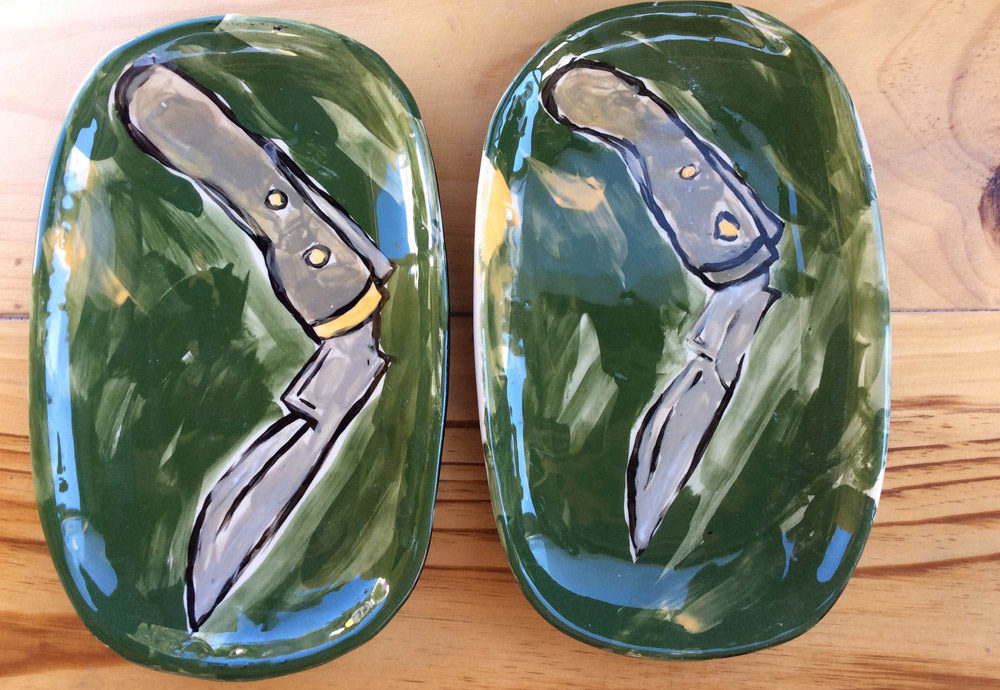
Ceramic plate by artist Laura Windvogel, a.k.a Lady Skollie
- Ceramic plate by artist Laura Windvogel, a.k.a Lady Skollie, 2015
- Ceramic plate by artist Laura Windvogel, a.k.a Lady Skollie, 2015
It’s been some 1,200 years since the Chinese developed the technique that gave the world the porcelain plates that are so commonplace today, and over two millennia since the invention of gold crockery, and yet for many, these flat objects we eat on, which cannot objectively change the taste of the food on one’s plate, still maintain an arguably irrational connection to the need to impress our social standing on others. Plates, it would seem, are one of the earliest and surprisingly most lasting ways to say, “bling bling money ain’t a thang.” DM/ ML





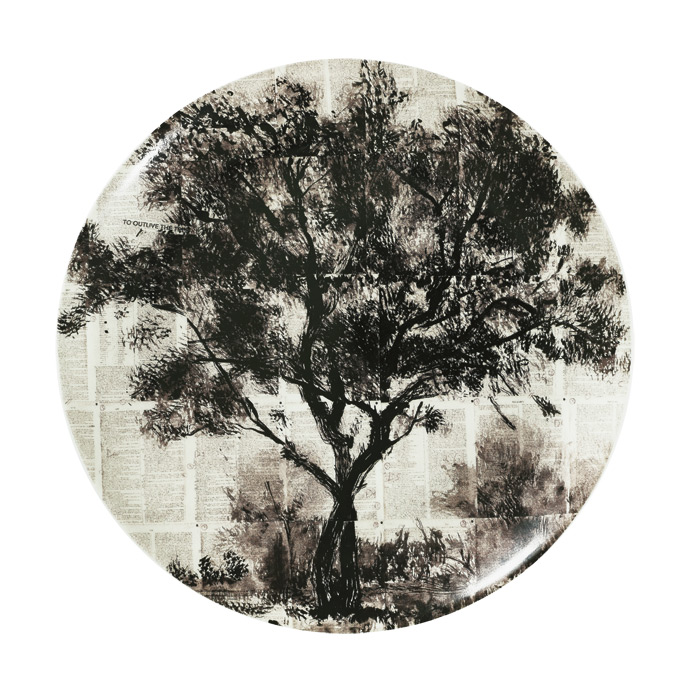
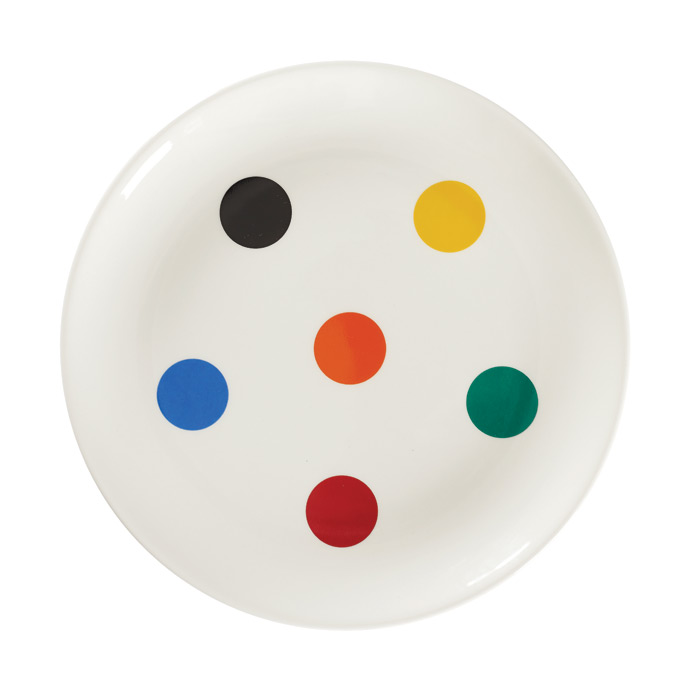
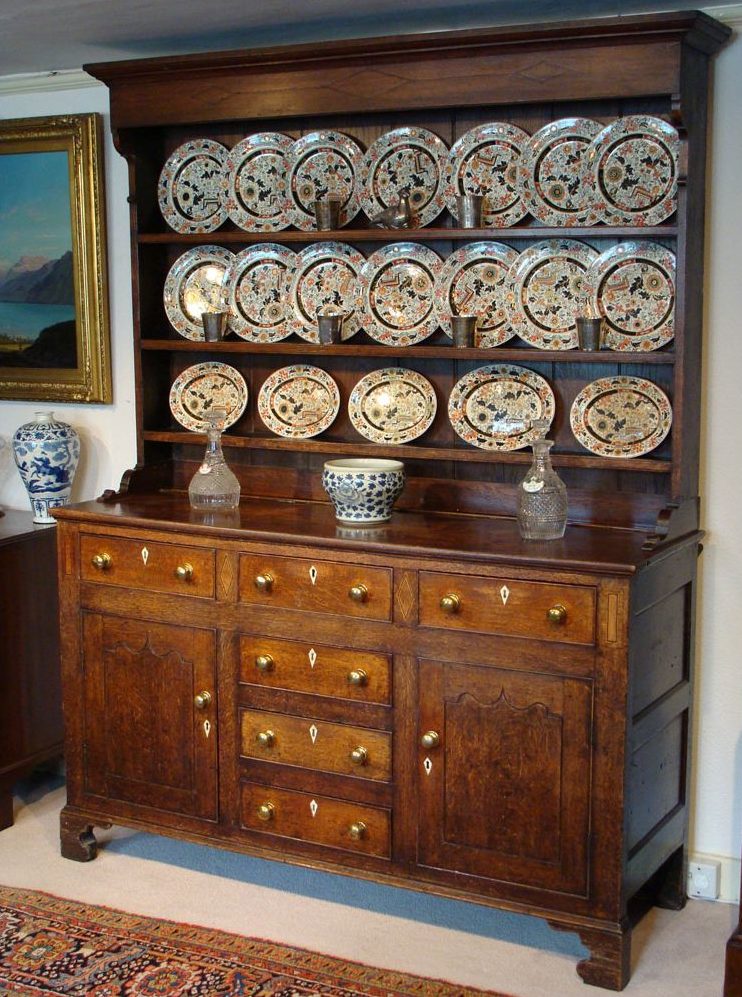
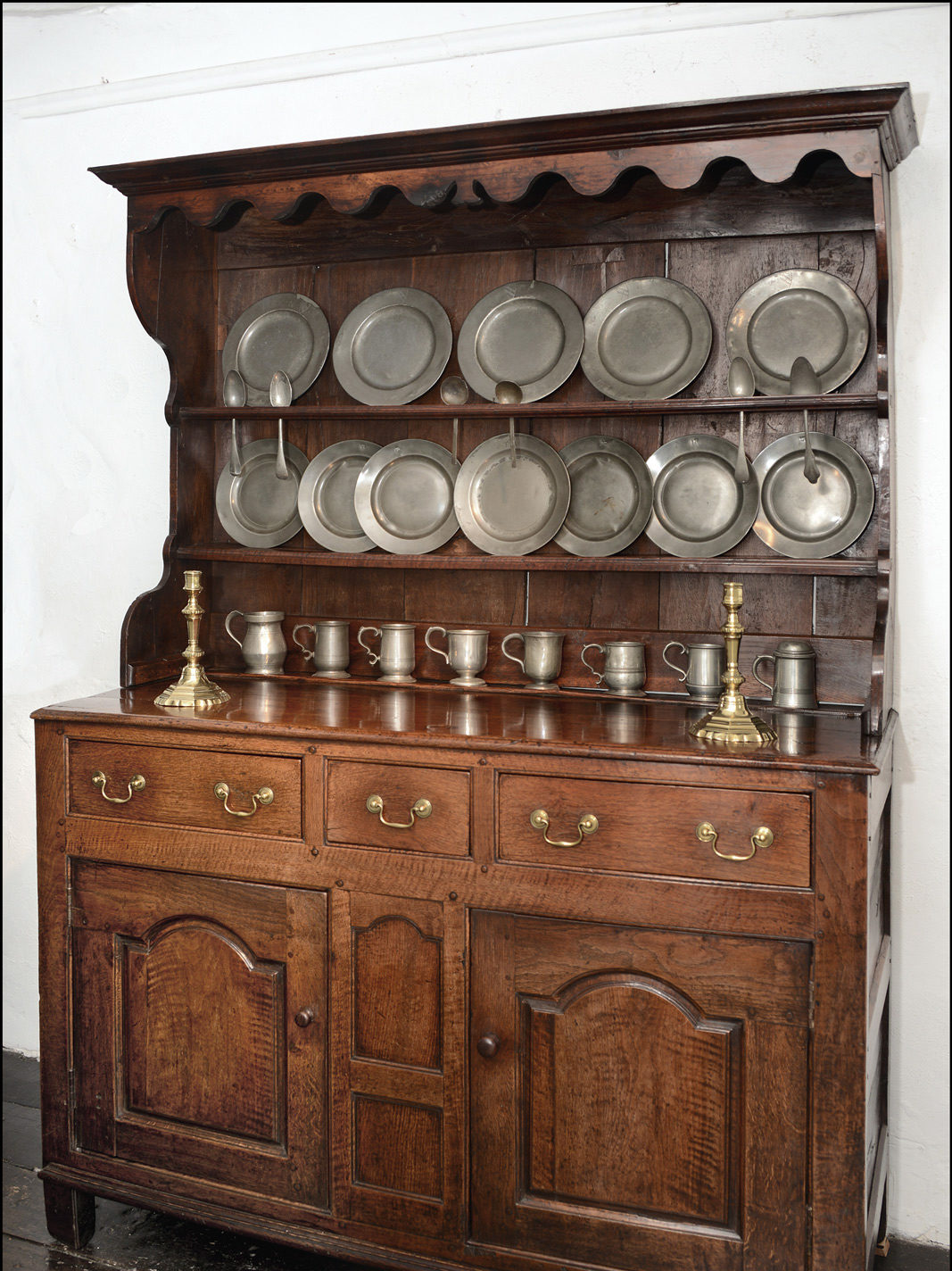
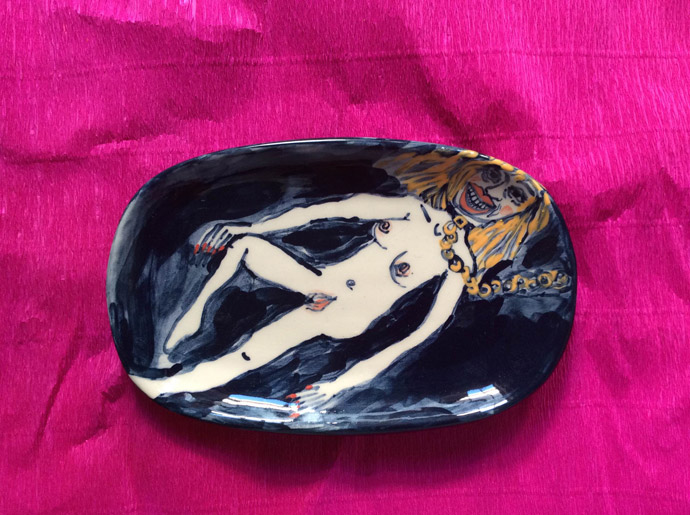
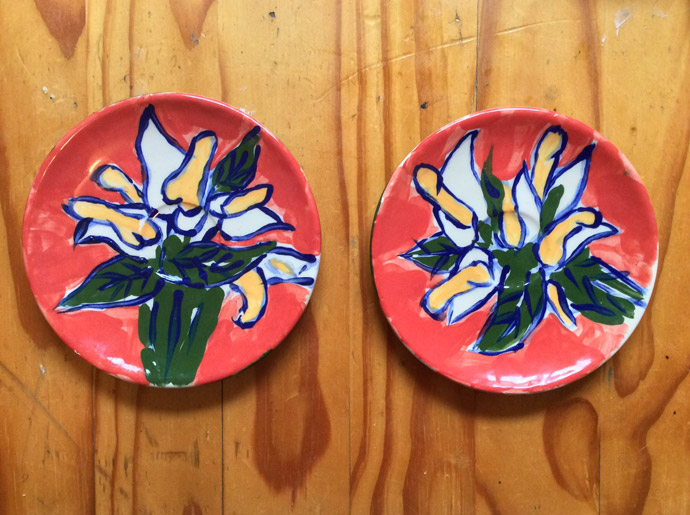
















 Become an Insider
Become an Insider